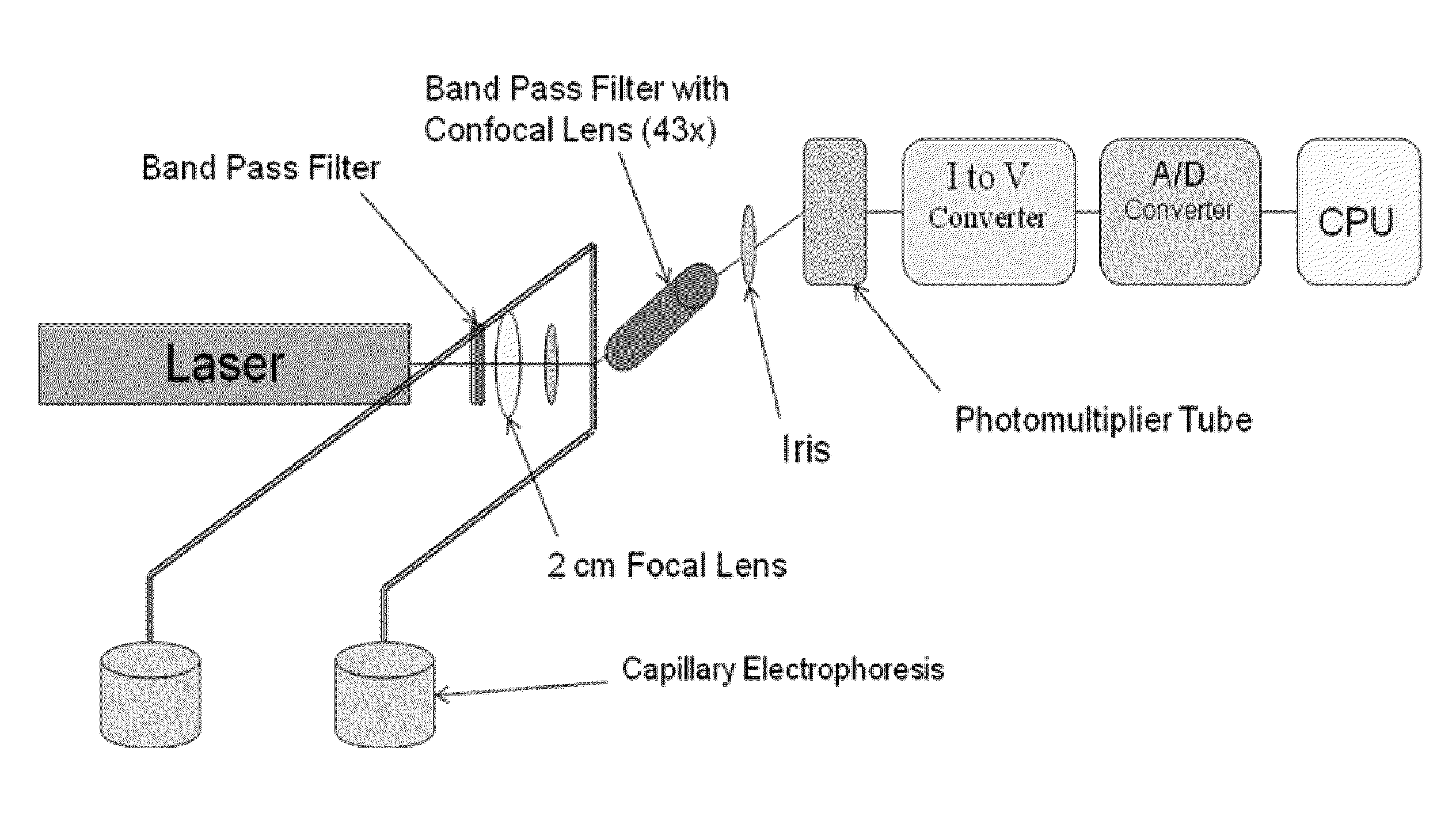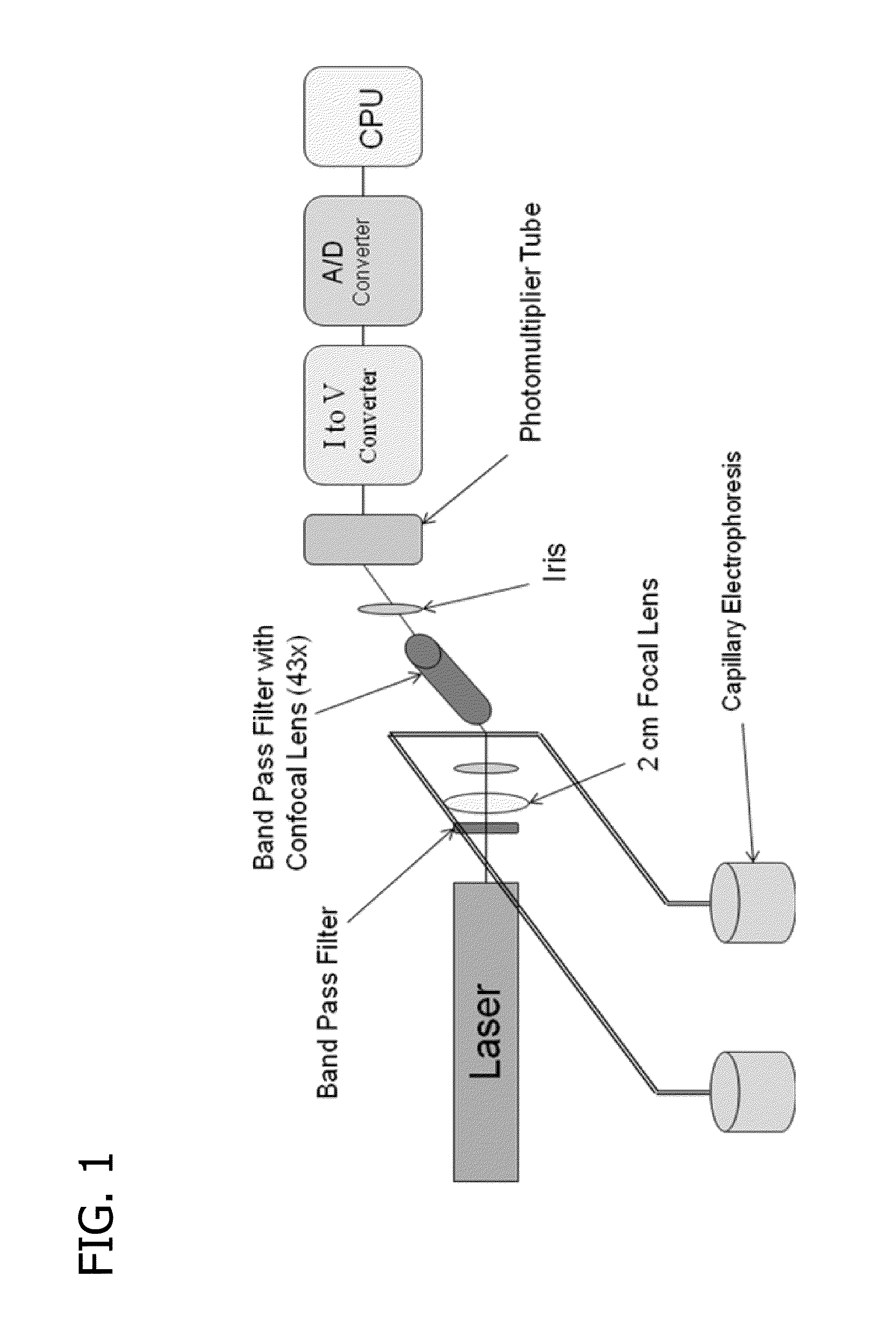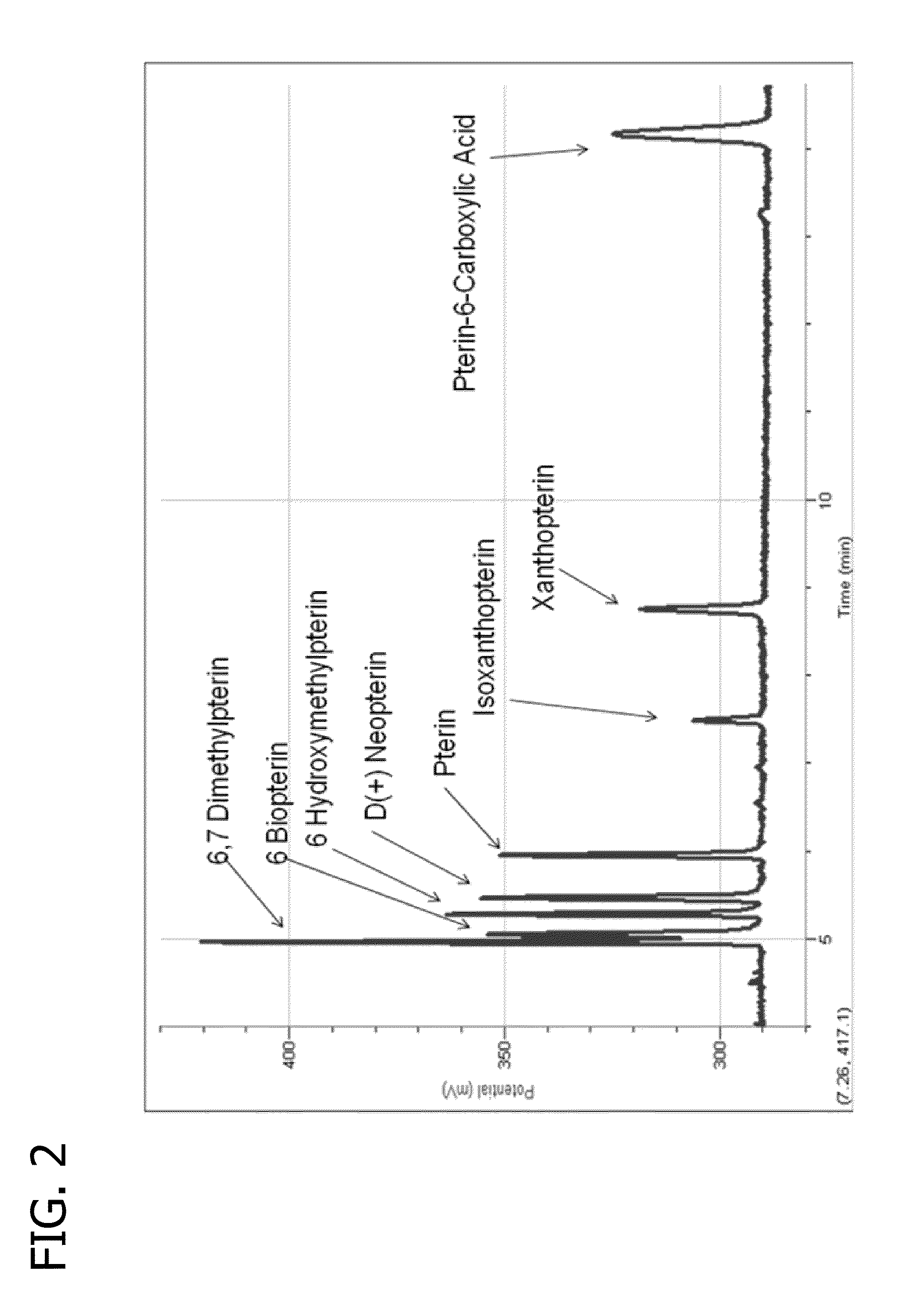Method and apparatus for cancer screening
a technology of apparatus and cancer, applied in the direction of fluorescence/phosphorescence, liquid/fluent solid measurement, peptides, etc., can solve the problems of long urine preparation time, low detection limit of oncopterin reported in the study, and inability to give blood for diagnostic tests, so as to improve the stability and reproducibility of urine pteridine detection, enhance detection, and reduce laser scatter
- Summary
- Abstract
- Description
- Claims
- Application Information
AI Technical Summary
Benefits of technology
Problems solved by technology
Method used
Image
Examples
example 1
[0086]The following example describes a high performance capillary electrophoresis (HPCE) separation of pteridines in a biological sample with laser-induced fluorescence (LIF) detection method (HPCE-LIF) for quantitative analysis of pteridines in urine samples. HPCE-LIF was used to investigate pteridine level patterns in 38 urine samples from a variety of cancer patients. Some types of cancer were not studied mainly due to the unavailability of urine samples and not the limitation of the technique. In order to assure that the pteridine levels represent the physiological concentration, the amount of pteridines was reported here as a ratio of pteridine to creatinine See Shi H., Ma Y., Ma Y. A Simple and Fast Method to Determine and Quantify Urinary Creatinine, Anal. Chim. Acta., 1995, 312, pp. 79-83.
Materials and Methods.
[0087]Chemicals.
[0088]Pteridine standard solutions of 6-biopterin, D-(+)-neopterin, pterin, isoxanthopterin, xanthopterin pteridine were purchased from Sigma-Aldrich ...
example 2
[0117]The foregoing method was also performed to analyze for cancer by detection of oncopterin. Cancer and cancer-free urine samples were analyzed and plotted as shown in FIG. 14. The experimental conditions were as follows: Running buffer: 0.1 M Tris-0.1 M borate-2 mM EDTA, pH 9.63; Capillary: 50 mm i.d.×70 cm (35 cm effective column length); Injection: gravimetric (17.5 cm from the of the sample to the instrument table and the injection time was 10 seconds). Running voltage: 371 V / cm; LIF detection at 325 nm / 445 nm (ex / em); concentration of each pteridine standard: 1.0×10−9 M. FIG. 14 shows these eight known peaks in the cancer samples and has them labeled 1-8: 1) 6,7-dimethylpterin; 2) 6-biopterin; 3) D-(+)-neopterin; 4) 6-hydroxymethylpterin; 5) Pterin; (6) isoxanthopterin; 7) xanthopterin; (8) carboxypterin. FIG. 14 also shows two peaks not identified with any of (1) through (8).
[0118]Previous work shows that oncopterin is elevated in patients with cancer. Since this experiment...
PUM
| Property | Measurement | Unit |
|---|---|---|
| voltage | aaaaa | aaaaa |
| power | aaaaa | aaaaa |
| length | aaaaa | aaaaa |
Abstract
Description
Claims
Application Information
 Login to View More
Login to View More - R&D
- Intellectual Property
- Life Sciences
- Materials
- Tech Scout
- Unparalleled Data Quality
- Higher Quality Content
- 60% Fewer Hallucinations
Browse by: Latest US Patents, China's latest patents, Technical Efficacy Thesaurus, Application Domain, Technology Topic, Popular Technical Reports.
© 2025 PatSnap. All rights reserved.Legal|Privacy policy|Modern Slavery Act Transparency Statement|Sitemap|About US| Contact US: help@patsnap.com



